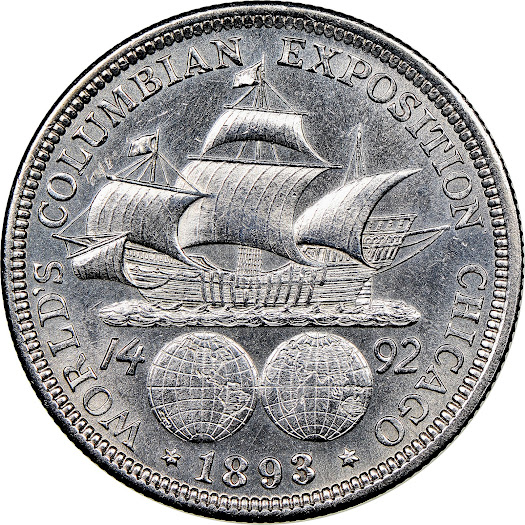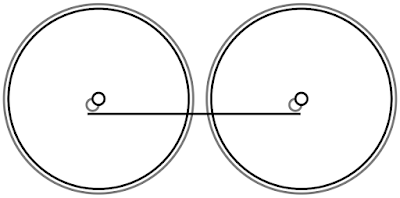___________________________________________________________________________
Overview and thesis:
Dr. Neil Gale’s body of work—anchored by his book “The Midway Plaisance at the 1893 World’s Columbian Exposition in Chicago” (Lulu.com, 2017) and expanded through his online archive “Amusement Parks — 140+ Defunct Illinois Park Articles”—forms a coherent, compelling argument about where American amusement culture began and how it evolved. He convincingly positions the 1893 Midway Plaisance as the birthplace of the American amusement park: a self-contained, pay-per-play entertainment zone whose model (and even its name, “midway”) radiated outward to state fairs, carnivals, and permanent parks across the country. The book provides the narrative foundation; the archive supplies scale, depth, and longitudinal context across 140+ Illinois parks that rose and fell over the next century.
The book, focused, vivid, foundational:
Scope and focus:
At 74 pages, the paperback is a brisk, accessible introduction to the Midway as both spectacle and system. The description of the “first giant Ferris wheel” (264 feet, designed by George Washington Gale Ferris Jr.) is not a mere icon cameo; it’s treated as a technological and cultural pivot that redefined urban entertainment.
Content highlights:
Gale’s treatment of the “foreign villages” clarifies how ethnographic display, architecture, foodways, music, and showmanship are synthesized into a new commercial entertainment grammar. Readers also get a rare window into the Midway’s economics (gross receipts, attendance patterns), helping explain why the pay-per-attraction model scaled so quickly.
Readability and tone:
The prose aims to “evoke the smell of cotton candy” while maintaining historical clarity. That blend of atmosphere and analysis makes it friendly to general readers while still helpful for specialists.
Reception (from the product page):
Praised for its engaging narrative and illustrations of the Ferris wheel and Midway operations, with readers noting the book “brings to life … how that historic park influenced the modern theme park.”
Some readers wanted more length and imagery for the price. That feedback is fair given the book’s concise format, but the online archive meaningfully expands what the print volume can’t carry.
The archive:
Breadth, documentation, and civic memory
Gale’s Illinois archive executes on the promise the book sets up. It’s not merely a list—it’s cultural archaeology, as the site itself argues.
Comprehensive scope:
141 defunct parks, from the famed (Riverview Park, Chicago; White City, Chicago; Old Chicago, Bolingbrook; Adventureland, Medinah) to the hyper-local and nearly lost (e.g., Fox River Picnic Grove; Elliott’s Amusement Park in Matteson; Cream City Park in Lyons; countless “Kiddielands” across suburbs).
It also traces aliases and renamings—vital for researchers—such as:
Riverview (Chicago) through its phases: Schützen Park, Riverview Sharpshooter Park, Riverview Exposition Park, Riverview Park.
Fox River Park/Riverview Park (Aurora).
Rainbow Playland → Dunes Kiddieland (Waukegan); Rainbow Park → Fun Harbor USA → Fun Harbour.
Diehl’s Park → Henry Amusement Park (Murphysboro).
Chronological and thematic depth:
Entries regularly include opening/closing dates, ride rosters, photos, and firsthand memories. Thematic sub-articles (e.g., the “African Dip” removal at Riverview; freak-show headliners; the “Igorrotes Village” context) show a willingness to examine entertainment’s ethically fraught terrain, not just its nostalgia.
Social history lens (“Why this matters”):
Gale connects park lifecycles to transportation, segregation and inclusion, suburbanization, land valuation, and the rise of shopping malls. That framing turns vanished funhouses into evidence for how Illinois—and the American city—was planned, reshaped, and repriced. This is a clear historiographical strength.
Research rigor and storytelling:
The site highlights Gale’s personal collection (dating to 1969) and emphasizes balancing “archival precision and emotional resonance.” The result is scholarship with texture: architectural oddities (Old Chicago’s indoor dome), haunted lore (Fairyland), and local ownership tales sit alongside ticket ephemera, advertisements, and ride lists.
Documentation philosophy:
The intentional absence of citations in the online essays—framed as a pedagogical choice—invites students to practice verification and contextualization. Whether one prefers inline footnotes or not, the educational rationale is transparent and widely endorsed by educators who use the site.
Interpretive contributions:
Origin story, clarified: By centering the Midway’s pay-per-play economy and its curated “street of nations,” Gale explains not just what people saw in 1893 but why that system became the blueprint for American amusement parks.
Naming and lineage:
The archive traces “Midway” from world’s fair argot to statewide park vernacular, then to suburban kiddie parks and single-attraction venues, showing how the model miniaturized and localized.
Infrastructure and erasure:
Gale links closures to highways, zoning, and commercial realignment (e.g., malls), demonstrating that park disappearance is urban policy in practice.
Memory work:
Soliciting reader artifacts, photos, and memories (with an open call for contributions) transforms the archive into a living repository, key for places where paper records are sparse and corporate archives never existed.
Representative depth across the list. Examples from the alphabetical listings underscore the breadth:
Chicago and near suburbs:
Riverview Park; White City (63rd & South Parkway); Sans Souci (Cottage Grove); Luna Park (Halsted & 52nd); Electric Park (Elston/Belmont/California); Kolze’s Electric Park; Hollywood Kiddieland; Kiddieland (Melrose Park); Old Chicago (Bolingbrook); Playland (Willow Springs/Justice); Olson Memorial Park; Woodlawn Amusement Park.
Downstate and regional:
Dellwood (Joliet); Glenwood (Batavia); Highland Park (Quincy); Fun Valley (Springfield); Lindbergh (Upper Alton); Riverside (Havana); Wonderland (Danville); Vandalia Beach; Twin Lakes (Paris).
Transitional formats: Water slides (Ebenezer Floppen Slopper’s/Doc Rivers); trampoline parks (Bounce Land); “Whoopee Auto Coasters” (1929–1930).
Design and usability:
The archive’s alphabetical index, cross-referencing of alternate park names, and topic clustering (e.g., extensive White City exhibit pages) are researcher-friendly.
The site promotes translation into 100+ languages and organizes articles within a broader Illinois/Chicago history taxonomy, situating amusement parks among transportation, retail, and “lost towns”—a boon for interdisciplinary study.
Critiques and opportunities:
Print vs. digital balance: Some readers found the book short for the price and wanted more imagery. A future expanded edition—adding an index, map plates, and a selective bibliography—would satisfy that audience without diluting the brisk narrative.
Citation apparatus:
The archive’s “learn-by-researching” approach is pedagogically straightforward. Still, a parallel set of source notes (even as a downloadable PDF) would help scholars cite with confidence while preserving the site’s instructional design.
Quantitative synthesis:
A top-level data visualization—timeline of openings/closures, geographic density by decade, correlations with transit buildouts—could distill patterns the archive already documents textually.
Inclusive narratives:
The project already engages with ethically sensitive exhibits and racially charged attractions. Continued expansion of worker/performer perspectives and neighborhood impacts would further deepen the social history.
Wayfinding: Given the sheer scale, adding a map-based index and “thematic paths” (e.g., “trolley parks,” “lakeside resorts,” “indoor parks,” “kiddielands,” “short-lived fads”) would make discovery even easier.
Impact and audience
For historians and urbanists:
The archive is a premier reference point for entertainment, planning, and infrastructure histories in Illinois. Its alias tracking and date ranges are particularly valuable for local case studies.
For educators:
The project models inquiry-based learning and offers approachable narratives, strong images, and vivid case material ideal for classroom use.
For the public:
It memorializes neighborhood landmarks and regional identity, preserving ephemera and memories before they vanish.
For theme park studies:
By tying the Midway’s commercial logic to later parks, Gale bridges world’s fair studies and amusement park scholarship—a link often asserted but rarely documented at this scale.
The Verdict:
Taken together, the Midway Plaisance monograph and the Illinois defunct amusement park archive constitute a major, enduring contribution to both Chicago/Illinois history and the study of American leisure. The book crystallizes the origin story; the archive proves its consequences across 140+ sites. Gale’s synthesis of meticulous collecting (since 1969), lucid storytelling, and social-historical framing turns “lost” parks into evidence for how modern life was engineered and experienced. Even where one might wish for denser citations or a longer print edition, the overall achievement is unequivocal: this is the most comprehensive, public-facing documentation of Illinois’ vanished amusement parks and one of the most straightforward explanations of how the 1893 Midway birthed an industry.
Strongly recommended—for historians, educators, urban planners, and anyone who’s ever wondered what stood where the mall or the expressway sits today.
































